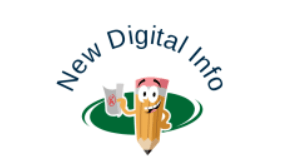The web usability is one of the issues we have to take into account when developing our site. This can help us reach our goals sooner than we think.
What do we mean when we talk about web usability? How can it be implemented on our site? In this article we are going to tell you in detail.
What is web usability?
For a website to really work it must meet certain usability requirements . This means that its structure and content have been developed with the users who are going to use it in mind.
When we plan the development of our website we must think about the users who are going to visit it. For this, nothing better than putting ourselves in the shoes of the user to be able to intuit how they will try to navigate our site; so that we develop a system according to your needs.
A website that meets the conditions of web usability , is easily navigable, has a clear organization and an intuitive menu, and offers help to users to navigate it. Thinking about how our user will feel in our small virtual house is essential to be able to develop it in the most optimal way possible.
In short, web usability refers to the interaction experience of a site for its users, where ease, fluidity and enjoyment are the fundamental pillars.
Brief history about web usability
Although in this article we focus on usability from the experience of web browsing, it is not a new or exclusively digital concept. All experiences that have been designed to satisfy the customer can be adjusted to the concept of usability .
The origin of usability could be located before the Renaissance: a time when the first experiences began to be designed to satisfy the desire or needs of individual people . The contemplation of the needs or requirements of the client began already at that time to occupy the center of productive development.
Leonardo Da Vinci is considered one of the first to think of this aspect of productive exchange. Throughout his life, he asked himself important questions about life and tried to find solutions for everyday problems that would improve the experience of interaction with rustic machines that facilitate manual work.
During the Industrial Revolution, Taylorism added its grain of sand: the creation of a system that remunerated workers according to the production carried out, served to start large industrial productions, which would contribute to the usability on the part of the workers in the industrialization chain.
Subsequently, Toyota (which implemented a production system with a great importance of humanization in the process) would collaborate with the evolution of this concept. Many years later, already in the twentieth century, Disney would contribute even more: the creation of Disney World, a place where technology was at the service of the user to offer him joy.
The incorporation of computers into everyday life was another fundamental step, around the 1980s. The massification of access to mobile devices and the Internet, for its part, would strongly contribute to usability, offering new tools that would contribute to the good relationship between humanity and technology.
At present, usability refers to the interaction of users with websites and applications , and remains linked to the same principle: to facilitate the communion between technology and humanity.
Web Usability: Examples
While these ideas are clear and in the goals of any designer web usability should be important , it does not always happen. So much so that it is very common to find sites and applications with which interaction is extremely difficult. However, from positive examples, we can learn to focus our design correctly.
By implementing web usability, we will soon notice the increase in user satisfaction. If the site loads quickly and offers the user what they are looking for, they will probably visit us again, contributing to the success of our project.
The positioning of our site will improve if we pay attention to its usability. Having a good labeling, a good organization and making an appropriate choice of content labels, we can achieve very good results, adequately satisfying the needs of the user.
Another positive example of usability is the reduction of costs in customer service ; because the user will have a satisfactory experience and will not feel the need to ask for help.
Principles of web usability
Web usability requires constant inquiry into the user’s experience with our service. Our development must be focused on facilitating the user experience, therefore, it is important that we always remember these principles.
There must be an optimal relationship between our system and the real world . This means that the interaction must be intuitive; so that the user does not feel strangeness or rejection towards our space.
There must be a control of the system without curtailing the freedom of the user . Whoever navigates our website must feel that they are in control, but we must guide them so that navigation is satisfactory.
We must offer flexibility and efficiency . This means that the use must be fluid and our system must be prepared to solve possible errors without hindering the user’s navigation.
How to make sure your website is easy to use
When it comes to testing the effectiveness of your site and its correct usability, you should take into account some guidelines. If you manage to meet these goals with your website, surely, users will be able to interact effectively with your content.
Optimize for mobile devices
We must work with a responsive design . It is essential to think about our development applied to various types of devices; so that the user experience is always the same: regardless of the device they are browsing from.
Follow WCAG standards
The WCAG standards refer to the principles of usability. Our design must be thought to fulfill a series of conditions that collaborate with the well-being of the client. These principles are: perceivable, operable, understandable and robust. This means that our development must be designed for all types of users: allowing access to anyone, regardless of their abilities.
Comply with common design elements
Choosing the colors on our site is important. As is the choice of a simple design, which serves to attract the user but does not create discomfort in him. Complying with the standardized design elements is essential for our site to meet the characteristics of web usability.
Create a visual hierarchy
When organizing our content it is very important that we can offer a hierarchical design that serves to guide the user. Sorting content by visual hierarchies can be a smart decision, which will help the user interact correctly with the elements of our site.
Simplify navigation
It is important to think of browsing as an action that the user performs completely autonomously . To offer you that freedom of action it is essential that our site does not present interaction problems. To do this, we must think of a simple design, with intuitive navigation and that offers what it promises.
Build credibility
The best way to offer credibility is by being transparent. It offers detailed information about the company and the way of working. Also, try to create a friendly registration process . When offering both the subscription and the user registration on the web, it is essential to take into account the necessary data and avoid requesting irrelevant information, so that the registration is simple and effective.
Organize content legibly
A correct structuring of the content can help us to get more visits . A website with a hierarchical and orderly design and content organization can be extremely successful, because it will allow satisfactory navigation. This is a very important point of our work: essential for our site to meet the necessary qualities to offer optimal interaction.
Be consistent
Consistency is another of the objectives to be pursued in web design to offer usability . A good experience requires a consistent organization of content; both in the sections of the site and in the set of interactions (buttons and links). It must offer a coherent relationship, so that the user can feel at home and navigate comfortably.
conclusion
As you may have understood by now, web usability is extremely important for our site to offer a comfortable interaction for the user. Remembering that the concept itself refers to a fluid interaction between humans and technology can be of great help to make the right decisions.
To have a site that meets the expected conditions, we must think of a simple design and a design plan that is attractive as well as efficient. Colors, hierarchies, and content organization are not to be taken lightly.
If you take these things into account, without a doubt, you will know how to develop a completely efficient site that adequately meets the web usability criteria required by the design of our times.










